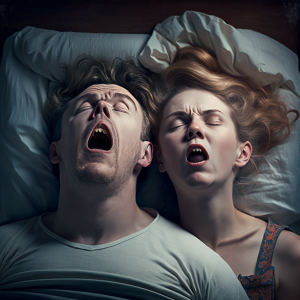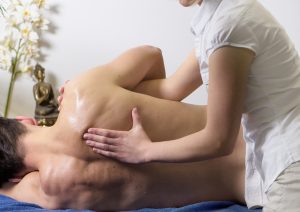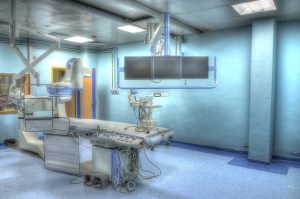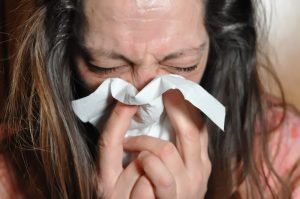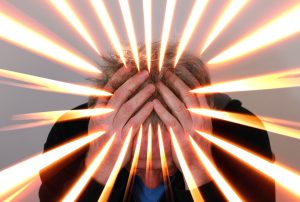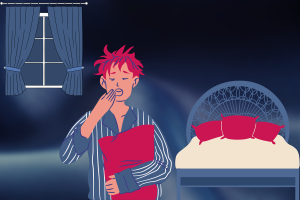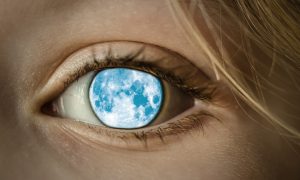Sleep Apnea and PTSD
 It is possible to develop sleep apnea as a secondary condition to post-traumatic stress disorder (PTSD). While sleep apnea is typically associated with physical factors such as obesity, enlarged tonsils, or a narrow airway, psychological factors can also contribute to the development or exacerbation of sleep apnea.
It is possible to develop sleep apnea as a secondary condition to post-traumatic stress disorder (PTSD). While sleep apnea is typically associated with physical factors such as obesity, enlarged tonsils, or a narrow airway, psychological factors can also contribute to the development or exacerbation of sleep apnea.
Please note: neither this site nor this article provides medical advice
PTSD
Post-traumatic stress disorder (PTSD) is a mental health condition that can develop after experiencing or witnessing a traumatic event that involves actual or threatened death, serious injury, or sexual violence. Examples of such events include military combat, natural disasters, physical or sexual assault, accidents, or terrorist attacks.
Symptoms: PTSD symptoms can be grouped into four main clusters:
a. Intrusive Thoughts: Recurrent, distressing memories of the traumatic event, flashbacks, nightmares, or intrusive distressing thoughts. These can be triggered by reminders of the trauma.
b. Avoidance: Avoiding thoughts, feelings, places, people, or activities that remind the individual of the traumatic event. They may also avoid discussing or thinking about the event.
c. Negative Mood and Cognition: Persistent negative emotions, such as fear, guilt, shame, or anger. This may lead to a distorted sense of blame or negative beliefs about oneself or the world. Memory problems, difficulty concentrating, and loss of interest in previously enjoyed activities may also be present.
d. Hyperarousal and Reactivity: Increased physiological arousal, hypervigilance, exaggerated startle response, irritability, difficulty sleeping, and problems with concentration. (More information in this at the bottom of this article.)
Duration: PTSD symptoms typically persist for more than one month and can last for months or even years if left untreated. The severity and duration of symptoms can vary among individuals.
Comorbidity: PTSD often co-occurs with other mental health conditions such as depression, anxiety disorders, substance use disorders, and sleep disorders. It can also lead to difficulties in interpersonal relationships and impair occupational functioning.
Treatment: Effective treatments for PTSD include trauma-focused therapies such as cognitive-behavioral therapy (CBT), prolonged exposure therapy (PE), eye movement desensitization and reprocessing (EMDR), and medication, including selective serotonin reuptake inhibitors (SSRIs). These treatments aim to reduce symptom severity, help individuals process traumatic memories, and develop healthy coping mechanisms.
Anxiety and Stress
People with PTSD often experience high levels of anxiety and stress, which can lead to disruptions in sleep patterns. These disruptions may show themselves as sleep apnea or worsen existing sleep apnea symptoms. The exact mechanisms linking PTSD and sleep apnea are not fully understood, but several factors may be involved.
One possible explanation is that the hyperarousal and heightened sympathetic activity associated with PTSD can impact the upper airway muscles and breathing control during sleep, leading to airway obstructions characteristic of sleep apnea. Additionally, individuals with PTSD may have a higher prevalence of risk factors such as obesity or substance abuse, which are known to contribute to sleep apnea.
If you suspect you have sleep apnea or are experiencing sleep-related difficulties as a result of PTSD, it is important to consult with a healthcare professional. They can evaluate your symptoms, conduct diagnostic tests such as a sleep study, and develop an appropriate treatment plan to address both conditions. Treatment options for sleep apnea may include lifestyle modifications, continuous positive airway pressure (CPAP) therapy, oral appliances, or surgery, depending on the severity and underlying causes of the condition.
Psychological Conditions Affecting Sleep Apnea
While sleep apnea is primarily associated with physical factors such as obesity, anatomical abnormalities, or aging, psychological factors can play a role in the development or exacerbation of sleep apnea symptoms. Here are some psychological factors that may contribute to sleep apnea:
Stress and Anxiety: Psychological stress and anxiety can lead to increased muscle tension, including the muscles in the upper airway. This heightened muscle tension can restrict the airflow and contribute to airway obstructions during sleep, resulting in sleep apnea symptoms.
Emotional Arousal: Intense emotions, such as anger, fear, or excitement, can trigger physiological changes in the body, including increased heart rate, blood pressure, and respiratory rate. These changes can affect breathing patterns and potentially lead to disruptions in airflow during sleep.
Depression: Depression is commonly associated with sleep disturbances, including insomnia and fragmented sleep. Disrupted sleep patterns can contribute to the development or worsening of sleep apnea symptoms. Additionally, depression may lead to changes in upper airway muscle tone and respiratory control, potentially increasing the risk of sleep apnea.
Medications: Certain medications used to treat psychological conditions, such as sedatives, tranquilizers, or antidepressants, can relax the muscles and tissues in the upper airway. This relaxation can increase the likelihood of airway obstructions and contribute to sleep apnea.
Sleep-related Disorders: Psychological disorders, including post-traumatic stress disorder (PTSD), panic disorder, or generalized anxiety disorder, can be associated with sleep disturbances. These sleep-related disorders can disrupt the normal sleep architecture and increase the risk of sleep apnea.
It is important to note that psychological factors may not directly cause sleep apnea but can contribute to its development or exacerbation. Addressing the underlying psychological issues through therapy, stress management techniques, or medication management, if necessary, can help improve sleep quality and potentially alleviate sleep apnea symptoms. However, it is crucial to consult with a healthcare professional for an accurate diagnosis and appropriate treatment plan tailored to your specific situation.
Relaxation Techniques That May Help With Sleep Apnea
Relaxation exercises can be beneficial in managing stress, anxiety, and emotional arousal, which can, in turn, help alleviate sleep apnea symptoms. Relaxation exercises promote a sense of calm and help reduce physiological arousal, which can contribute to improved sleep quality. Here are some relaxation techniques that may be helpful:
Deep Breathing: Deep breathing exercises involve taking slow, deep breaths, focusing on filling your lungs completely and exhaling slowly. This practice helps activate the body’s relaxation response, reducing stress and anxiety.
Progressive Muscle Relaxation (PMR): PMR involves systematically tensing and relaxing different muscle groups in the body. By progressively tensing and then releasing the tension in each muscle group, you can promote relaxation and relieve muscle tension associated with stress and anxiety.
Mindfulness Meditation: Mindfulness meditation involves focusing your attention on the present moment, without judgment. This practice can help calm the mind, reduce stress, and promote relaxation. It can be particularly useful in managing emotional arousal.
Guided Imagery: Guided imagery involves using your imagination to visualize calming and peaceful scenes. By creating a mental image of a serene environment, you can promote relaxation and reduce stress and anxiety. You can also get music to help with this.
Yoga and Stretching: Engaging in gentle yoga poses and stretching exercises can help release muscle tension, improve flexibility, and promote relaxation. These practices can be especially beneficial for individuals who experience physical tension as a result of stress or anxiety.
Progressive Relaxation Audio Recordings: There are various audio recordings available that guide you through relaxation exercises, such as guided imagery or progressive muscle relaxation. These recordings can be helpful in providing structure and support during your relaxation practice.
It’s important to note that relaxation exercises may not directly treat sleep apnea but can contribute to overall stress reduction and improved sleep quality. If you are experiencing sleep apnea symptoms, it is advisable to consult with a healthcare professional who can assess your condition and recommend appropriate treatments specific to your needs.
Hyperarousal and Heightened Sympathetic Activity
These are key features of the physiological response in individuals with post-traumatic stress disorder (PTSD).
Hyperarousal: Hyperarousal refers to a state of increased physiological and psychological activation, vigilance, and responsiveness to potential threats. It is one of the three main clusters of symptoms in PTSD, alongside intrusive re-experiencing and avoidance. Hyperarousal symptoms can persist even when the individual is not in immediate danger and may interfere with daily functioning.
Common hyperarousal symptoms in individuals with PTSD include:
Sleep disturbances: Difficulty falling asleep, staying asleep, or having restless and disturbed sleep.
Irritability and anger: Increased sensitivity to perceived threats, feeling on edge, and being easily provoked.
Hypervigilance: Constantly being on guard, scanning the environment for potential danger, and feeling an exaggerated startle response.
Difficulty concentrating: Problems with attention, memory, and concentration due to the heightened state of alertness.
Exaggerated response: An intense and exaggerated startle response to unexpected stimuli, leading to feelings of fear or panic.
Heightened Sympathetic Activity: Sympathetic activity refers to the activation of the sympathetic nervous system, which is responsible for the body’s “fight-or-flight” response. In individuals with PTSD, there is often an overactive sympathetic nervous system, resulting in heightened physiological arousal, such as:
Increased heart rate: The heart rate may be elevated even in non-threatening situations.
Elevated blood pressure: Blood pressure may rise due to increased sympathetic activity.
Rapid breathing: Shallow, rapid breathing is common during hyperarousal states.
Increased sweating: Excessive sweating or feeling sweaty, even in non-strenuous situations.
Muscle tension: Persistent muscle tension, which can contribute to physical discomfort and pain.
The hyperarousal and heightened sympathetic activity seen in individuals with PTSD are thought to be related to the dysregulation of stress response systems. Traumatic experiences can trigger long-lasting changes in the brain, including alterations in the amygdala, prefrontal cortex, and hypothalamic-pituitary-adrenal (HPA) axis, which regulate emotional processing and stress responses.
Addressing hyperarousal and sympathetic activity in PTSD often involves a combination of therapeutic interventions. Trauma-focused therapies, such as cognitive-behavioral therapy (CBT) and eye movement desensitization and reprocessing (EMDR), can help individuals learn to regulate their arousal levels and reduce the impact of triggers. Medications may also be prescribed in some cases to manage symptoms associated with hyperarousal.
It’s important for individuals experiencing hyperarousal or any other PTSD symptoms to seek professional help from mental health professionals who specialize in trauma and PTSD. They can provide an accurate diagnosis and develop a tailored treatment plan to address the specific needs of the individual.
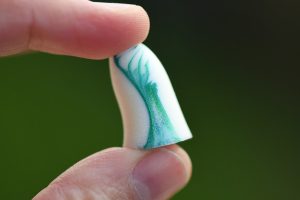 Snore-proof earplugs are specially designed earplugs that aim to reduce or block out the noise of snoring while still allowing you to hear other sounds to a certain extent. They can be helpful for individuals who are sensitive to noise or have trouble sleeping due to a partner’s or roommate’s snoring. Here are some features and types of earplugs you might consider when looking for snore-proof options:-
Snore-proof earplugs are specially designed earplugs that aim to reduce or block out the noise of snoring while still allowing you to hear other sounds to a certain extent. They can be helpful for individuals who are sensitive to noise or have trouble sleeping due to a partner’s or roommate’s snoring. Here are some features and types of earplugs you might consider when looking for snore-proof options:-
